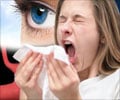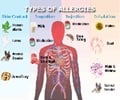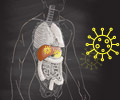- Lichen planus - (http://www.mayoclinic.org/diseases-conditions/lichen-planus/home/ovc-20188519)
- What is Lichen Planus - (http://www.aocd.org/?page=lichenplanus)
- LICHEN PLANUS: OVERVIEW - (https://www.aad.org/public/diseases/rashes/lichen-planus)
What is Lichen planus?
Lichen planus is an autoimmune inflammatory disease which affects the skin, nails, hair and the mucous membranes. It is also known as Lichen ruber planus. The word ‘lichen’ means tiny bumps on the skin and ‘planus’ means ‘flat’, therefore the name comes from a description of the rash’s appearance.
Lichen planus is a relatively common and episodic condition which may last for months to years. It is seen in up to 2 percent of the population.
It is seen commonly among women who are in the age group from 30 to 60 Years. It was first time recognized in 1869 by Erasmus Wilson.
Depending on the which area of the body is involved it can present as two types -
- Lichen Planus that affects the skin, hair and nails. It is a self-limited condition and is called Cutaneous Lichen planus.
- Lichen Planus that affects the inner mucosal lining of the gastrointestinal tract, vagina, larynx, ear, nose, bladder, peritoneum and conjunctiva. This type is called Mucosal Lichen planus.
What are the Causes of Lichen planus?
It is a chronic inflammatory condition believed to be autoimmune in nature. Autoimmunity is a condition where the body’s immunity acts against its own tissues. The immune system attacks the skin and mucous membranes in lichen planus with antibodies produced again these tissues. How and why is the autoimmune reaction triggered is not know.
Familial bullous lichen planus is a rare type which runs in families.
Lichen planus is not a contagious condition and it is safe for a person to live in community and interact freely with family and friends without infect them.
Lichen planus can affect anyone but is most common among middle aged adults.
When a triggering agent or a causal factor is found it is known as lichenoid reaction.
The following are the factors which may trigger lichen planus -
- Flu vaccine
- Hepatitis C infection
- NSAIDS (Non-Steroidal Anti Inflammatory Drugs)
- Medications for hypertension or heart disease
- Certain metals, chemicals and pigments
- Mercury exposure
- Stress

What are the Clinical Features of Lichen planus?
- The most common presenting lesions on the skin are shiny, purple coloured, flat topped itchy bumps. The lesions can be found on the legs, back, wrist, ankle, palms, soles and neck. The lesions on the shin are usually thick and patchy. It can involve the scalp, hair and nails. Sometimes blisters are seen. It can be associated with mild to intense pruritus (itching).
- Genital lesions: The genital lesions are often painful, raw and red in colour.
- Oral lesions: The oral lesions can involve the tongue, gums and the lips. The lesions are tiny white dots arranged in a net-like pattern. Redness, swelling, pain, and peeling of gums can be present.
- Scalp lesions: Scalp involvement is rare. The lesions on the scalp are red tiny bumps associated with thinning of hair or hair loss in patches accompanied by irritation.
- Nail lesions: It can involve a few or all nails. The lesions on the nails cause thinning of nails, ridges and grooves on the nails and a temporary or permanent loss of the nails.
How do you Diagnose Lichen planus?
The diagnosis is mostly made clinically by the dermatologist. The following tests may be ordered
Biopsy: A small bit of the involved portion of the tissue is removed to examine later under the microscope. The microscopic picture of the biopsied tissue helps in the confirmation of the diagnosis.
Hepatitis C test: Sometimes hepatitis C infection acts as a trigger for Lichen planus. So tests to detect the infection with hepatitis C are performed.
Allergy test: Some allergens aggravate lichen planus; so the allergy test may be requested.

What are the Complications of Lichen planus?
- Lichen planus may leave the skin dark after the resolution of the rash.
- Lichen planus may increase the risk of skin cancer though this is rare.
- The vaginal lesions of lichen planus are very painful and it may leave scars. Sexual dysfunction is a complication in cases with vaginal lichen planus.
How do you Treat Lichen planus?
The condition usually resolves itself. There is no cure for the condition. But to relieve the symptoms and hasten the healing process, the following medications are prescribed.
Corticosteroids: Corticosteroid cream or oral pills are used to reduce the inflammation. However long term steroids are associated with side effects and are not recommended.
Antihistamines: help to relieve the itching.
Phototherapy: UV-A and UV-B light are used to reduce the lesions.
Calcineurin inhibitors like tacrolimus, cyclosporine and pimecrolimus are also useful.
Retinoic acid: Oral or topical retinoic acid helps to clear the lesions.

How do you Prevent Lichen planus?
- Lichen planus is not a preventable condition. But, since the triggering factors are identified measures are to be taken to prevent the triggers.
- Identifying the allergen and prevent contact with the allergens.
- Reduce stress to prevent triggers. Yoga and meditation can be useful to relieve the stress.
- It is essential that you maintain good oral hygiene. Consult a dentist for advice.
- Certain toothpastes may make oral lesions worse and you may be advised to use a milder toothpaste.
- Consult a hepatologist for Hepatitis C management.









